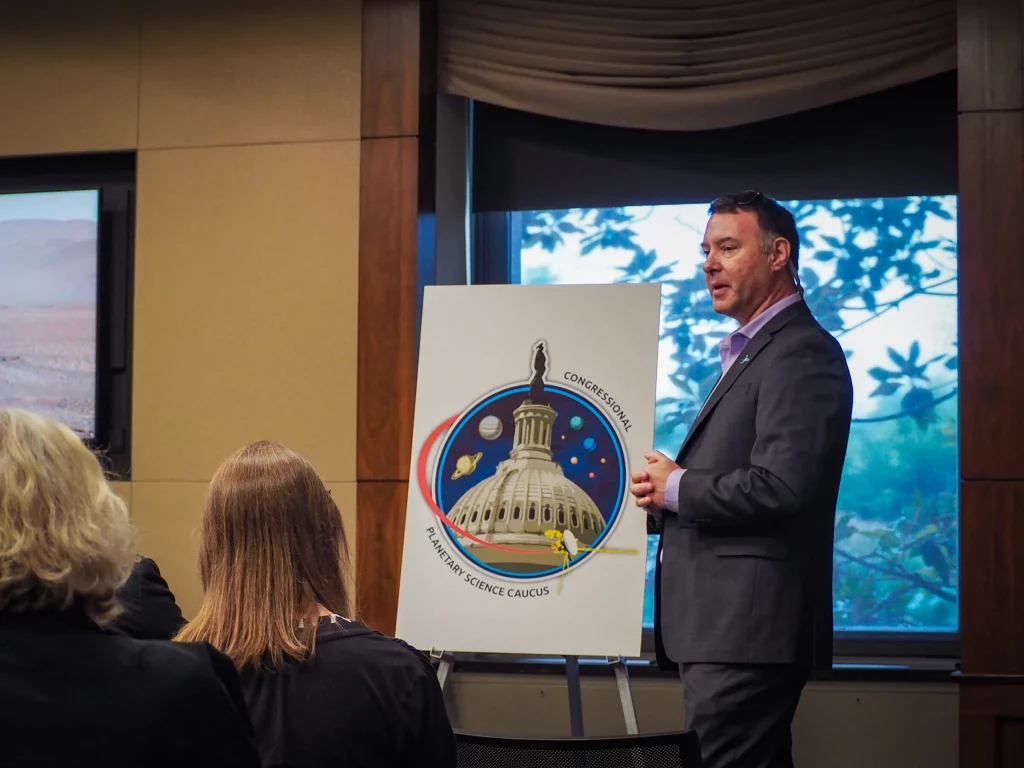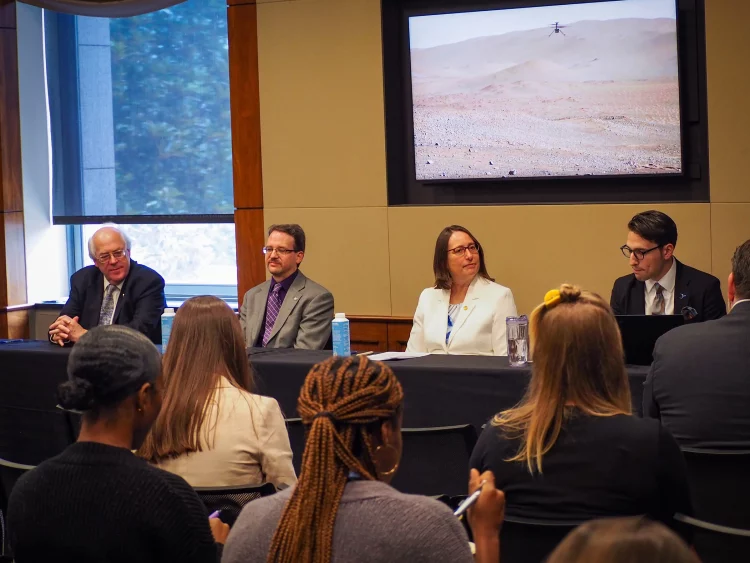1. Introduction
Space exploration has always been a realm of human aspiration and curiosity, driving us to explore the unknown and push the boundaries of our knowledge. The journey from the first space missions to today’s sophisticated interplanetary explorations has been marked by significant milestones and groundbreaking discoveries. “Charting the Course for Discovery,” an insightful article from The Planetary Society, explores the strategies and plans that are shaping the future of space exploration. This expanded overview delves into the key themes, technological innovations, and future directions in space exploration as outlined in the article.
2. The Current Landscape of Space Exploration
2.1 Historical Context
Space exploration has evolved dramatically since the early days of the space race. Key milestones include:
- The Moon Landing (1969): NASA’s Apollo 11 mission marked humanity’s first steps on the lunar surface, demonstrating the potential of human space exploration.
- Mars Rovers (1997-Present): Missions like Mars Pathfinder and Curiosity have provided invaluable data about the Red Planet’s surface and potential for past life.
- International Collaboration (1998-Present): The construction and operation of the International Space Station (ISS) have exemplified global cooperation in space research.
2.2 Modern Achievements
Recent advancements in space exploration include:
- Commercial Spaceflight: Companies like SpaceX and Blue Origin have revolutionized space access with reusable rockets and private space missions.
- Planetary Exploration: Robotic missions to Mars, Jupiter, and Saturn have expanded our understanding of the solar system’s dynamics and composition.
- Astronomical Observations: The Hubble Space Telescope and upcoming James Webb Space Telescope have provided unprecedented views of the universe, revealing details about distant galaxies, nebulae, and cosmic phenomena.
3. Key Themes in Space Exploration
3.1 Advancing Technology
The advancement of technology is at the heart of space exploration. Innovations include:
- Propulsion Systems: Development of advanced propulsion technologies, such as ion thrusters and nuclear propulsion, aims to enhance spacecraft efficiency and reduce travel time to distant planets.
- Robotics and AI: Robotic systems and artificial intelligence play critical roles in planetary exploration, enabling autonomous operations and data collection in environments that are challenging for human presence.
3.2 Expanding Human Presence
Human exploration beyond Earth orbit is a key focus:
- Lunar Exploration: NASA’s Artemis program aims to return humans to the Moon, establish a sustainable presence, and use it as a stepping stone for Mars exploration.
- Mars Missions: Plans for human missions to Mars involve developing life support systems, habitats, and surface exploration technologies to ensure long-term survival on the Red Planet.
3.3 International Cooperation
Space exploration increasingly relies on international partnerships:
- Global Collaboration: Joint missions and shared resources among space agencies foster collaborative research and maximize the scientific return of space missions.
- Shared Infrastructure: The ISS serves as a prime example of international cooperation, providing a platform for research and technology testing in low Earth orbit.
4. Emerging Missions and Goals
4.1 NASA’s Artemis Program
NASA’s Artemis program aims to return astronauts to the Moon and establish a sustainable human presence. Key objectives include:
- Lunar Gateway: An orbiting lunar outpost that will serve as a staging point for missions to the Moon and Mars.
- Lunar Surface Exploration: Deploying rovers, landers, and habitats to explore the Moon’s surface, including the South Pole, which may harbor water ice.
4.2 Mars Sample Return Mission
The Mars Sample Return (MSR) mission aims to:
- Collect Samples: NASA’s Perseverance rover is gathering samples of Martian soil and rock for future return to Earth.
- Analyze Samples: Analyzing these samples will provide insights into the potential for past life on Mars and the planet’s geological history.
4.3 Europa Clipper Mission
The Europa Clipper mission, scheduled for launch in the 2020s, aims to:
- Explore Europa: Investigate Jupiter’s moon Europa, which is believed to have a subsurface ocean that could harbor conditions suitable for life.
- Study the Ice Shell: Examine the moon’s ice shell, surface composition, and geological activity to assess its habitability.

5. Challenges and Solutions
5.1 Space Environment
The harsh environment of space presents several challenges:
- Radiation Exposure: Developing shielding technologies and protective measures to safeguard astronauts and equipment from harmful cosmic radiation.
- Microgravity Effects: Addressing the physiological effects of prolonged exposure to microgravity on the human body, including muscle atrophy and bone density loss.
5.2 Resource Management
Efficient resource management is crucial for sustaining long-duration missions:
- Life Support Systems: Designing systems to recycle air, water, and waste, ensuring that resources are used efficiently and sustainably.
- In-Situ Resource Utilization (ISRU): Exploring the use of local resources, such as lunar regolith and Martian soil, to support mission operations and reduce reliance on Earth-based supplies.
5.3 Technological Integration
Integrating new technologies into space missions requires:
- Testing and Validation: Conducting rigorous testing to ensure that new technologies perform reliably in the space environment.
- Interdisciplinary Collaboration: Collaborating across disciplines to develop and implement innovative solutions that address the complex challenges of space exploration.
6. The Role of Private Industry
6.1 Commercial Spaceflight
Private companies have transformed the space industry:
- SpaceX: Innovations such as reusable rockets and crewed spacecraft have lowered the cost of access to space and expanded opportunities for commercial missions.
- Blue Origin: With its focus on sustainable spaceflight and space tourism, Blue Origin is advancing technology for orbital and suborbital missions.
6.2 Public-Private Partnerships
Public-private partnerships enhance space exploration:
- NASA’s Commercial Crew Program: Collaborations with private companies to develop crewed spacecraft that transport astronauts to and from the ISS.
- Commercial Lunar Payload Services (CLPS): Engaging private companies to deliver scientific payloads and exploration technologies to the Moon.
7. Future Directions in Space Exploration
7.1 Advancing Beyond the Moon
Exploration beyond the Moon will focus on:
- Interplanetary Travel: Developing technologies for missions to Mars and other planets, including advanced propulsion and spacecraft design.
- Space Habitats: Creating sustainable habitats for long-term human presence on other celestial bodies.
7.2 Exploring Exoplanets
The search for exoplanets and habitable worlds involves:
- Space Telescopes: Instruments like the James Webb Space Telescope will search for exoplanets and analyze their atmospheres for signs of life.
- Interstellar Probes: Concepts for probes that could travel to nearby star systems to study potentially habitable exoplanets.
7.3 Enhancing Space Science and Technology
Future research will focus on:
- Astrobiology: Investigating the origins of life and the potential for life elsewhere in the universe.
- Cosmic Phenomena: Studying black holes, neutron stars, and dark matter to understand the fundamental nature of the cosmos.
8. Inspiring the Next Generation
8.1 STEM Education
Encouraging young people to pursue careers in science, technology, engineering, and mathematics (STEM) is vital for the future of space exploration:
- Educational Programs: Initiatives and outreach programs that inspire and educate students about space and science.
- Career Opportunities: Providing opportunities for students to engage with space missions and technologies through internships and research programs.
8.2 Public Engagement
Engaging the public in space exploration includes:
- Science Communication: Utilizing media and outreach to share the excitement and discoveries of space exploration with a broad audience.
- Citizen Science: Involving the public in scientific research and data collection through participatory programs and initiatives.
9. Conclusion
“Charting the Course for Discovery” underscores the remarkable progress and future potential of space exploration. From advancing technology and expanding human presence to fostering international collaboration and inspiring the next generation, the future of space exploration is filled with opportunities and challenges. As humanity continues to push the boundaries of knowledge and explore the cosmos, these efforts will not only enhance our understanding of the universe but also inspire new generations to dream big and reach for the stars. The journey of space exploration is a testament to human ingenuity and perseverance, charting a course for discovery that promises to shape the future of our world and beyond.


















































Discussion about this post